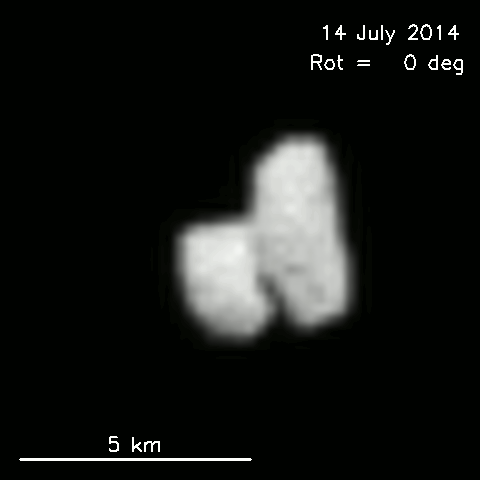Spacecraft Rosetta Shows Comet has Two Components

Explanation:
Why does this comet's nucleus have two components?
The
surprising discovery that
Comet 67P/ChuryumovGerasimenko has a double nucleus came
late last week as
ESA's robotic interplanetary spacecraft
Rosetta continued
its approach toward the ancient comet's
core.
Speculative ideas on how the double core was created include, currently, that
Comet ChuryumovGerasimenko is actually the result of
the merger of two comets, that
the comet is a
loose pile of rubble pulled apart by
tidal forces,
that ice evaporation on the comet has been asymmetric,
or that the comet has undergone some sort of explosive event.
Pictured above, the comet's unusual 5-km sized comet nucleus is seen rotating
over the course of a few hours, with each frame taken 20-minutes apart.
Better images -- and hopefully more refined theories -- are expected as
Rosetta
is on track to enter orbit around
Comet ChuryumovGerasimenko's nucleus early next month,
and by the end of the year, if possible,
land a probe on it.
Authors & editors:
Robert Nemiroff
(MTU) &
Jerry Bonnell
(USRA)
NASA Web Site Statements, Warnings,
and Disclaimers
NASA Official: Jay Norris.
Specific
rights apply.
A service of:
LHEA at
NASA /
GSFC
& Michigan Tech. U.

